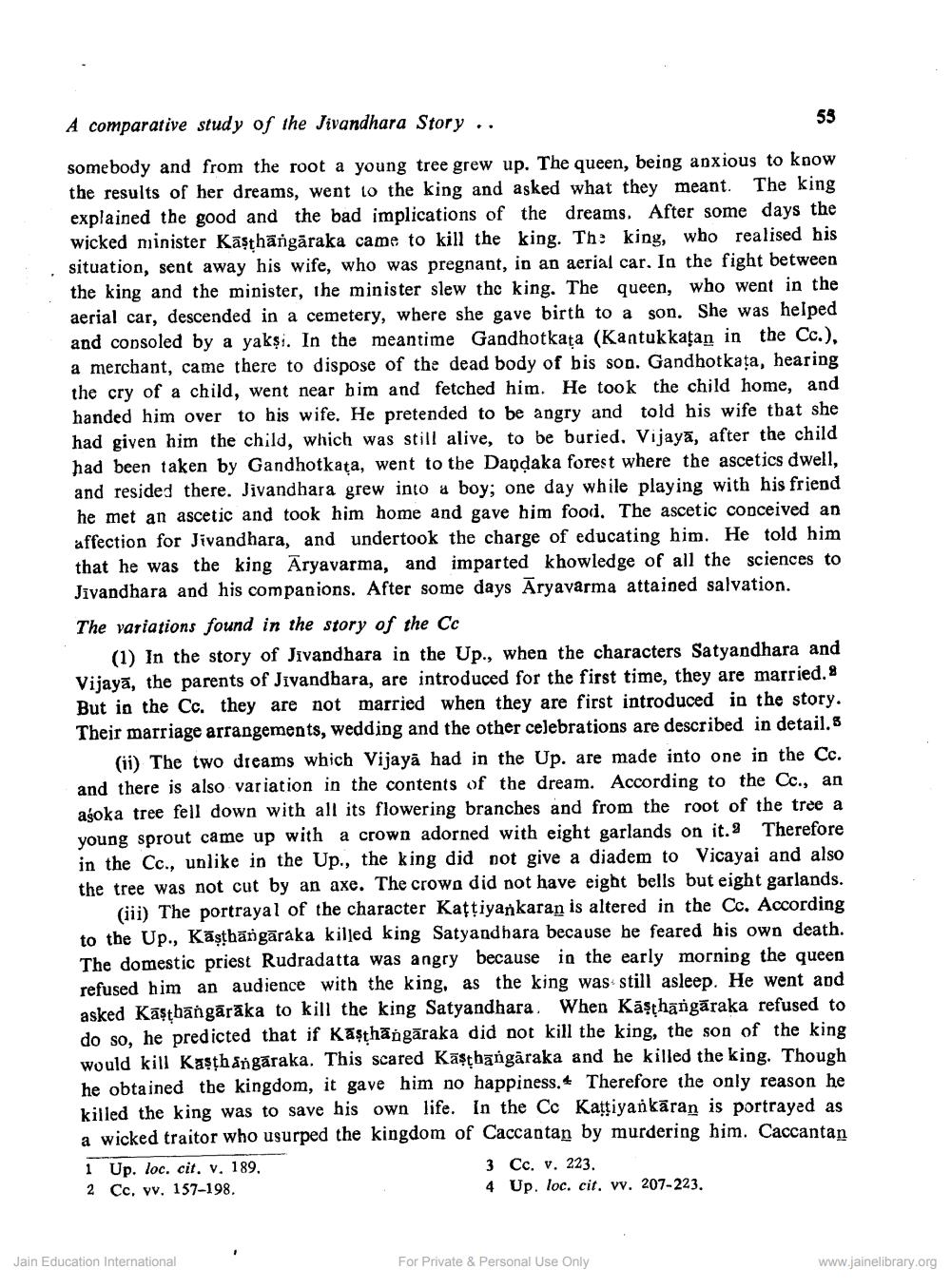________________
A comparative study of the Jivandhara Story
somebody and from the root a young tree grew up. The queen, being anxious to know the results of her dreams, went to the king and asked what they meant. The king explained the good and the bad implications of the dreams. After some days the wicked minister Kästhängāraka came to kill the king. The king, who realised his situation, sent away his wife, who was pregnant, in an aerial car. In the fight between the king and the minister, the minister slew the king. The queen, who went in the aerial car, descended in a cemetery, where she gave birth to a son. She was helped and consoled by a yaksi. In the meantime Gandhotkata (Kantukkatan in the Cc.). a merchant, came there to dispose of the dead body of bis son. Gandhotkaja, hearing the cry of a child, went near him and fetched him. He took the child home, and handed him over to his wife. He pretended to be angry and told his wife that she had given him the child, which was still alive, to be buried. Vijays, after the child had been taken by Gandhotkaça, went to the Dapdaka forest where the ascetics dwell, and resided there. Jivandhara grew into a boy; one day while playing with his friend he met an ascetic and took him home and gave him food. The ascetic conceived an affection for Jivandhara, and undertook the charge of educating him. He told him that he was the king Äryavarma, and imparted khowledge of all the sciences to Jivandhara and his companions. After some days Aryavarma attained salvation. The variations found in the story of the Ce
(1) In the story of Jivandhara in the Up., when the characters Satyandhara and Vijays, the parents of Jivandhara, are introduced for the first time, they are married.8 But in the Cc. they are not married when they are first introduced in the story. Their marriage arrangements, wedding and the other celebrations are described in detail.
(ii) The two dreams which Vijaya had in the Up. are made into one in the Cc. and there is also variation in the contents of the dream. According to the Cc., an aśoka tree fell down with all its flowering branches and from the root of the tree a young sprout came up with a crown adorned with eight garlands on it. Therefore in the Cc., unlike in the Up., the king did not give a diadem to Vicayai and also the tree was not cut by an axe. The crown did not have eight bells but eight garlands. (iii) The portrayal of the character Kattiyankaran is altered in the Cc. According to the Up., Käsṭhängäraka killed king Satyandhara because he feared his own death. The domestic priest Rudradatta was angry because in the early morning the queen refused him an audience with the king, as the king was still asleep. He went and asked Katthängarāka to kill the king Satyandhara. When Kasthangaraka refused to do so, he predicted that if Kasthängaraka did not kill the king, the son of the king would kill Kasthangaraka. This scared Kasthangaraka and he killed the king. Though he obtained the kingdom, it gave him no happiness. Therefore the only reason he killed the king was to save his own life. In the Co Kaiyankaran is portrayed as a wicked traitor who usurped the kingdom of Caccantan by murdering him. Caccantan
1 Up. loc. cit. v. 189.
2 Cc, vv. 157-198.
Jain Education International
55
3 Cc. v. 223.
4
Up. loc. cit. vv. 207-223.
For Private & Personal Use Only
www.jainelibrary.org




